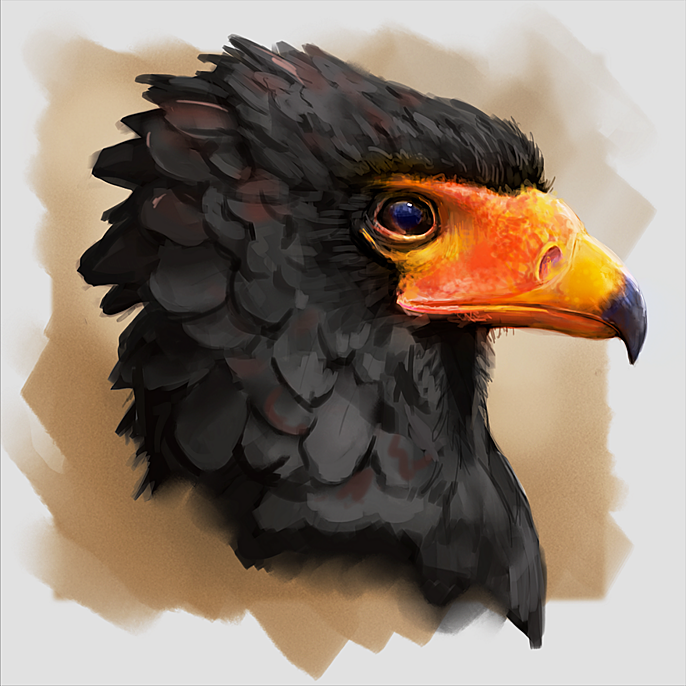
How to Handle Negative Feedback
In a creative field like art, you’re likely to encounter negative feedback. This is especially true if you're sharing your work online. As you’re publishing work for the masses to see, expect to get opinions.
While we’re always hoping for nothing but positivity, critical responses to our work can actually help us. So, if you're wondering how to handle negative feedback, read on.
Use It

Photo Courtesy of Bennetts Sketchbook
It’s easy to get offended—and you should let yourself feel it. But the best way to pick yourself back up is by ultimately using it. Ask yourself the following questions:
- Is it constructive? Art is almost always subjective, so try not to take negative feedback too personally—especially if it has some merit.
- Is the criticism valid? If so, consider using it as an opportunity to improve your skills. For example, if someone critiques your realism on a hyper-realistic piece because of your shading, you can better pinpoint that skill as an area that may need improvement.
- Who is giving the feedback? Is it a fellow artist, or a random troll? If it seems like criticism solely for negativity’s sake, delete it and try your best to move on.
Ignore It

Photo Courtesy of Toutydroids Art Blog
While some feedback may be valid and even play out in your favor by the end, other feedback can simply be ignored. Since the dawn of time, there have been trolls–and we don't mean those creatures that are waiting for you to cross the wrong bridge.
Internet trolling is a common practice in which a person posts senseless and derogatory comments online with the sole intention of provoking certain responses.
Recent studies, however, show that trolling has little to do with the content itself and instead speaks to the behavioral traits of the internet trolls themselves—narcisissm and psychopathy.
As a result, internet trolls have no concern for the other person behind the screen, but instead, solely desire to induce emotional and often ill-mannered discussion. So the next time you read a silly comment likely written by an internet troll, know that it’s not you—it’s them.
Be Open

Photo Courtesy of Kidchuckle Wip Stuff
Picture this: you’ve been working on a render for weeks now, and along the way, you’ve stumbled, picked up valuable skills, and are now prouder than ever of what you’ve achieved. You’ve been waiting for the moment to share and celebrate your achievement on Instagram with your following! But the very first comment you receive—criticism.
In the life of a CG artist, the scenario above has likely happened before—if not multiple times—and it may even continue to occur in the future. So how do you overcome it?
Be open. Try to be objective about your work and let it lead to a meaningful discussion. If you don’t agree, express that and try to understand why the other person felt that way.
While it’s natural to be overcome with emotion, especially when art can be personal, it’s also important to remember that there are appropriate responses to negative feedback.
Benefits of Responding

Photo Courtesy of Vonschlippe Art School Journey
Responding to comments can increase your engagement on most platforms and will statistically put you in front of more people. But this means the way you respond is even more crucial. Coming up with responses to negative feedback can be tricky. Here are a few definite don’ts of social media for art to avoid:
- Don’t be the source of negativity: Other people’s negativity doesn’t justify your own. The best way to end the cycle is by addressing the comment in a more productive direction. If you find yourself becoming defensive, think again. If you can’t find something more positive to take out of the comment, consider thanking the commenter for sharing their insight instead.
- Don’t post irregularly: Posting consistently will help you practice reacting and responding to all sorts of feedback, whether positive or negative.
- Don’t stick with posting just art: By showing your followers more than just the final product, they will not only understand that you’re a human and not a machine, but also get to know your process and journey. This won’t stop all the trolls, but should ward off a few!
Limit Yourself to Positive Forums
Platforms like Facebook and Instagram leave you wide open to criticism from people who might not even be in the field. Real artist forums, on the other hand, are places that artists go for a joint purpose—to learn from and grow with fellow artists. There is truly a plethora of reasons to participate in artist forums, such as:
- Building a network: Meet like-minded individuals and unlock the potential of community growth.
- Empowering you to test ideas: Forums can be as casual or as serious as you make them. Don’t be afraid to test new concepts and styles and ask for feedback.
- Creating a brand: It’s normal not to have perfected a look that defines you. That’s where forums come in handy. You can find your niche amongst the thousands of other artists using the forum.
Cubebrush is a great platform for just that because it was created by an artist for artists. One of Cubebrush’s core values is to support artists, whether they are at the beginning of their career, just do it for fun, or are a seasoned vet. That’s why every Cubebrush feature, such as the abundance of assets, tutorials, and especially the well-known artist forums, are all curated to help artists like you succeed.